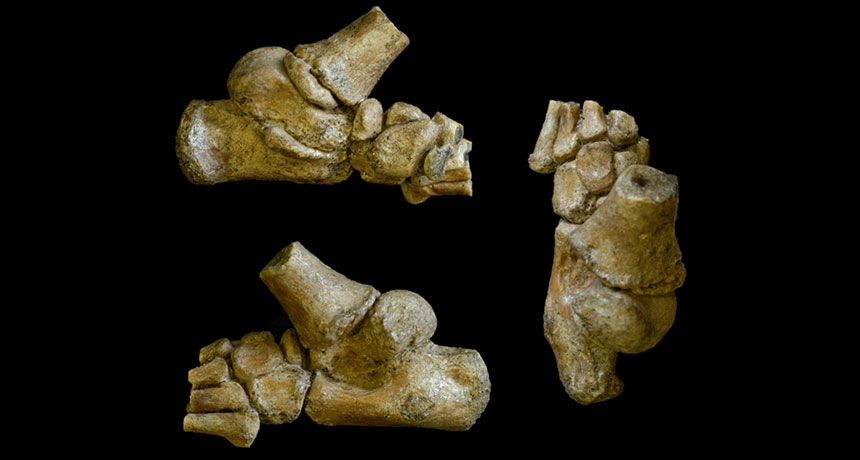Foot fossil pegs hominid kids as upright walkers 3.3 million years ago
But a juvenile Australopithecus afarensis’ foot still had some apelike features

TINY WALKER A fossil of an ancient hominid child’s foot (shown here from different angles) suggests that members of Lucy’s species, Australopithecus afarensis, walked upright early in life.
J. DeSilva and Cody Prang